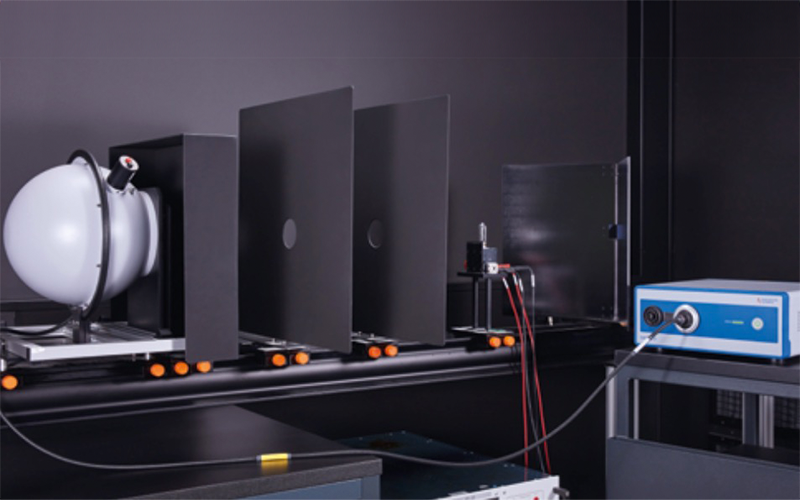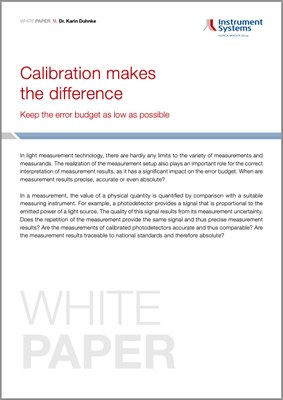WHITE PAPER: Calibration Makes the Difference
In light measurement technology, there are hardly any limits to the variety of measurements and measurands.
The realization of the measurement setup also plays an important role for the correct interpretation of measurement results, as it has a significant impact on the error budget. When are measurement results precise, accurate or even absolute?
As a leading manufacturer of light measurement technology, measurement quality has top priority at Instrument Systems. To this end, we operate an DAkkS accredited testing laboratory at our facilities in Munich and Berlin. In light measurement technology, there are hardly any limits to the variety of measurements and measurands. The realization of the measurement setup also plays an important role for the correct interpretation of measurement results, as it has a significant impact on the error budget. When are measurement results precise, accurate or even absolute?
In a measurement, the value of a physical quantity is quantified by comparison with a suitable measuring instrument. For example, a photodetector provides a signal that is proportional to the emitted power of a light source. The quality of this signal results from its measurement uncertainty. Does the repetition of the measurement provide the same signal and thus precise measurement results? Are the measurements of calibrated photodetectors accurate and thus comparable? Are the measurement results traceable to national standards and therefore absolute?
In order to obtain an absolute measurement result that is comparable regardless of the actual execution, the signal of a measuring instrument must be specified as a multiple of a clearly defined SI unit. At the same time, the measurement uncertainty is required for the specific measurement, both of which require traceable calibration. The starting point of a calibration is always a comparison object (benchmark), which is completely known with regard to the quantity to be measured, including the measurement uncertainty, and is traceable through an uninterrupted calibration chain to a realization of the SI units, for example by PTB. In the case of the photodetector, this can be a light source via which the signal is set in relation to the radiated power of the normal. A high-quality measuring instrument provides repeatable, precise measurement results. Its calibration ensures accurate measurement results with low measurement uncertainty. Using national standards, the measurement results are traceable and therefore absolute.
White Paper Content:
- Each measurement has its own measurement uncertainty
- Continous calibration chain
- Regular control required
- Precise, accurate and absolute measurement results
Download the WHITE PAPER
"Calibration Makes the Difference"
by Dr. Karin DUHNKE, Instrument Systems
Registration Required
White Paper Issue: Rev. 1.0 / Published November 2023 / Pages: 4
Provided by Instrument Systems
White Paper Sponsor

© 2023 Luger Research e.U. – Institute for Innovation & Technology / WP09112023


